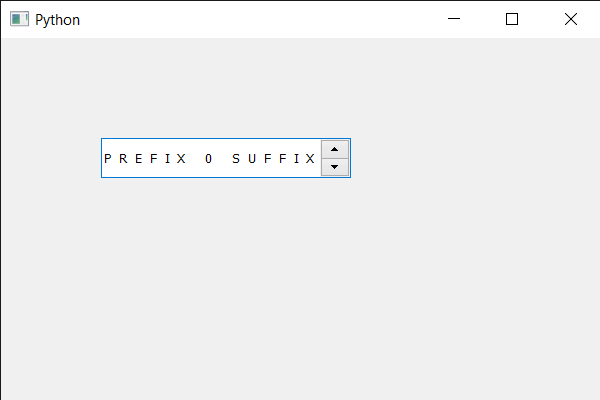En este artículo, veremos cómo podemos establecer el espacio entre letras en el texto del cuadro de número, el espacio entre letras es la distancia (brecha) entre dos letras consecutivas. El espaciado se puede cambiar especificando los píxeles o el porcentaje. Para configurar el espaciado usando píxeles, usamos QFont.AbsoluteSpacingcomo tipo de espaciado y para configurar el espaciado usando porcentaje, usamos QFont.PercentageSpacingcomo tipo de espaciado.
Para hacer esto, usamos setLetterSpacingel método con el objeto QFont del cuadro de número
Sintaxis: font.setLetterSpacing(tipo, valor)
Argumento: se necesitan dos argumentos, el primero es el tipo de espaciado y el otro es el valor flotante
Retorno : Devuelve Ninguno
A continuación se muestra la implementación.
# importing libraries
from PyQt5.QtWidgets import *
from PyQt5 import QtCore, QtGui
from PyQt5.QtGui import *
from PyQt5.QtCore import *
import sys
class Window(QMainWindow):
def __init__(self):
super().__init__()
# setting title
self.setWindowTitle("Python ")
# setting geometry
self.setGeometry(100, 100, 600, 400)
# calling method
self.UiComponents()
# showing all the widgets
self.show()
# method for widgets
def UiComponents(self):
# creating spin box
self.spin = QSpinBox(self)
# setting geometry to spin box
self.spin.setGeometry(100, 100, 250, 40)
# setting range to the spin box
self.spin.setRange(0, 999999)
# setting prefix to spin
self.spin.setPrefix("PREFIX ")
# setting suffix to spin
self.spin.setSuffix(" SUFFIX")
# getting font of the spin box
font = self.spin.font()
# setting letter spacing
font.setLetterSpacing(QFont.AbsoluteSpacing, 8)
# reassigning this font to the spin box
self.spin.setFont(font)
# create pyqt5 app
App = QApplication(sys.argv)
# create the instance of our Window
window = Window()
# start the app
sys.exit(App.exec())
Producción :
Publicación traducida automáticamente
Artículo escrito por rakshitarora y traducido por Barcelona Geeks. The original can be accessed here. Licence: CCBY-SA